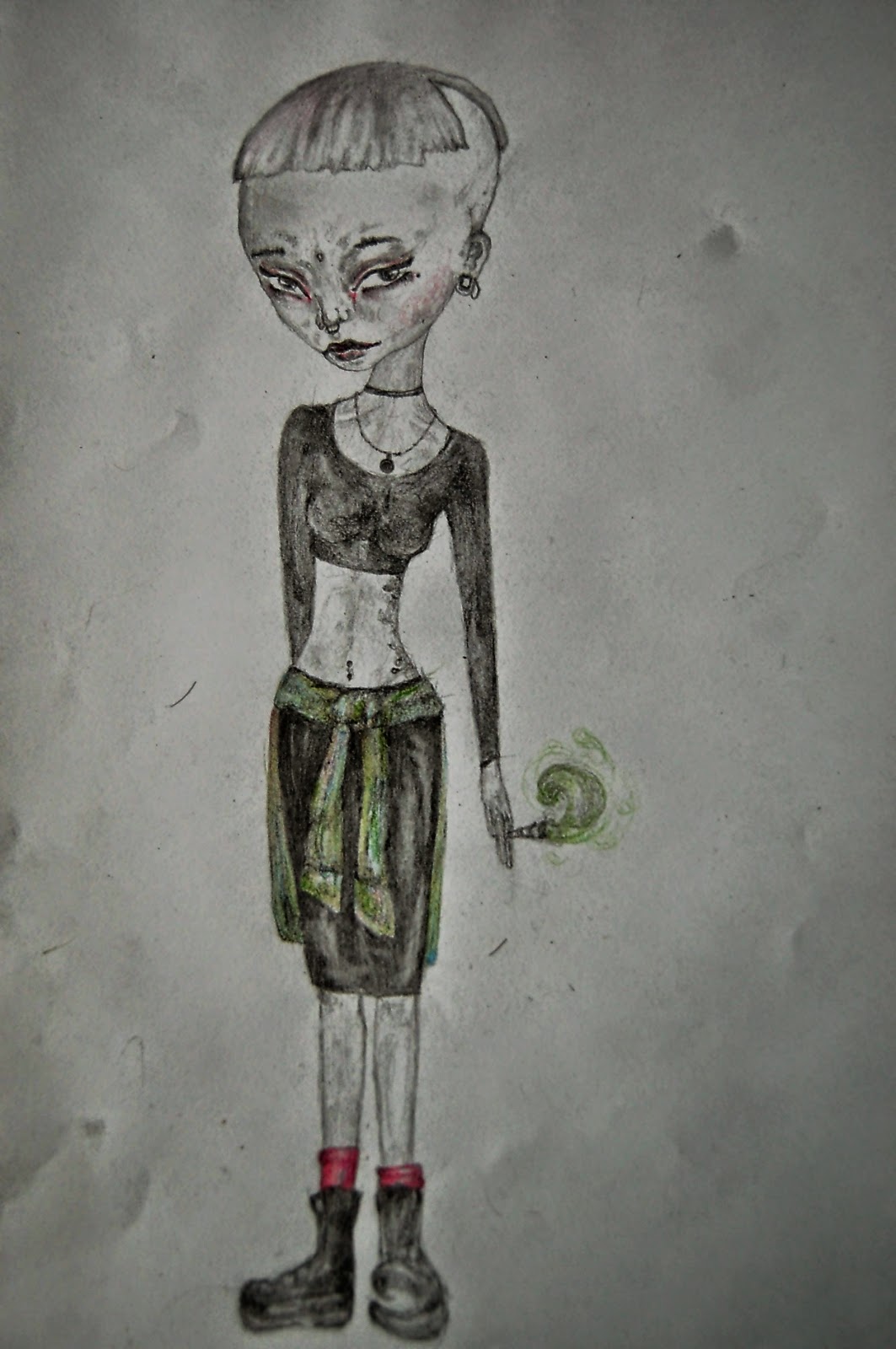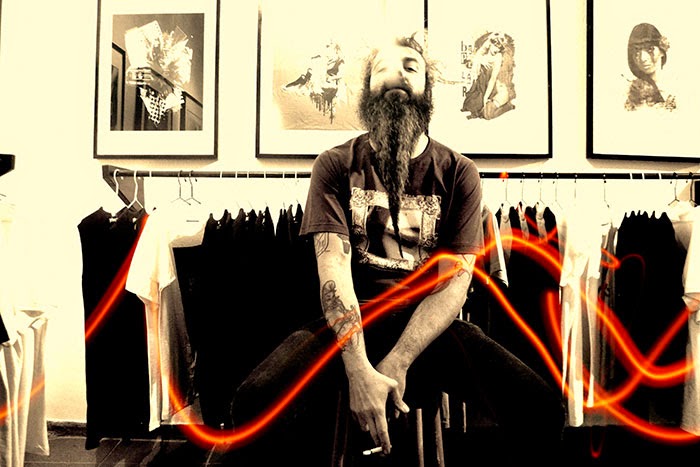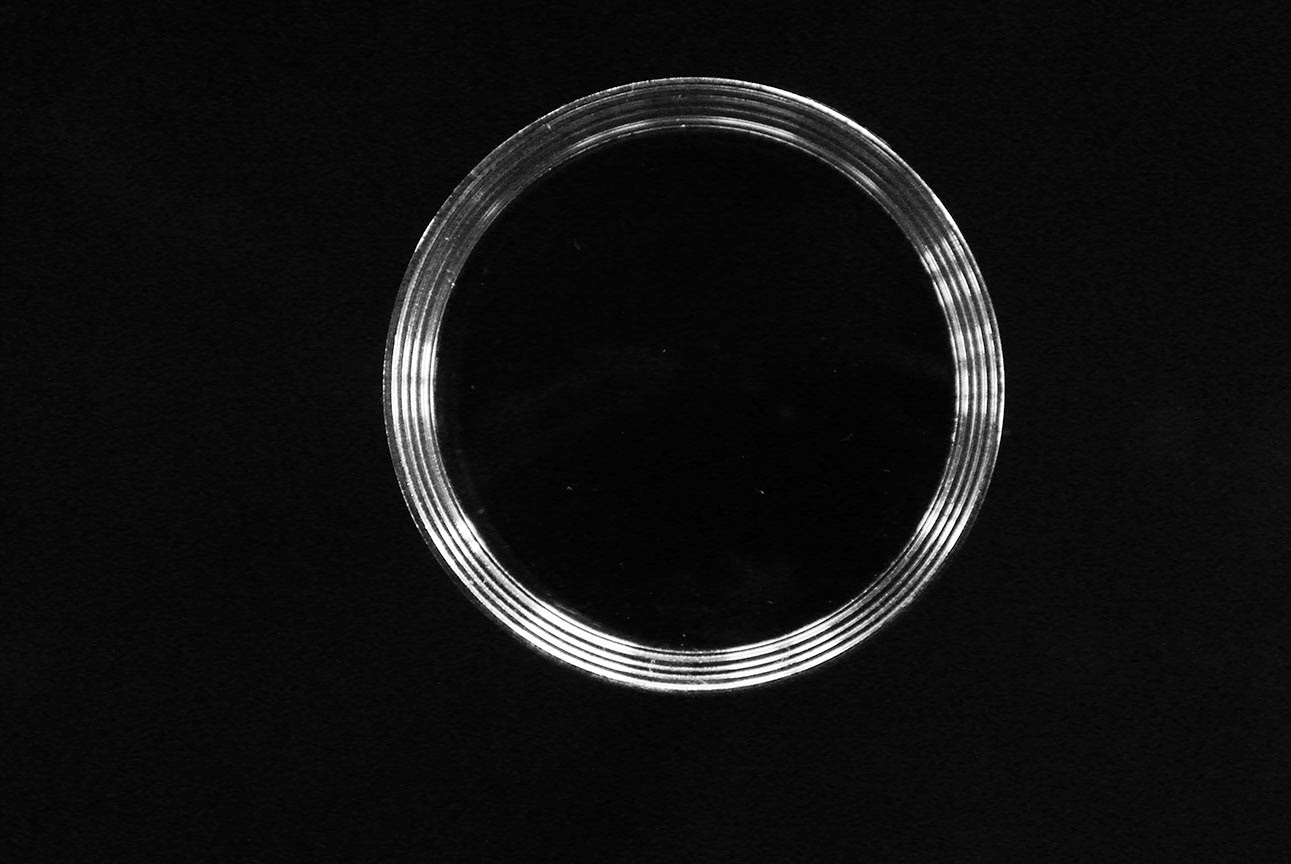27 Φεβρουαρίου 2015
Warhol short movies
Le Grice, Malcolm, Experimental Cinema in the Digital Age, BFI, 2001 .
Rieser, Martin & Zapp, Andrea, New Screen Media-Cinema/Art/Narrative, BFI, 2002. Rush, Michael, New Media in Art, 2005.
Shanken, Edward A., Art and Electronic Media, Phaidon Press, 2009.
Toop, David, Ocean of Sound, Serpent’s Tail, 1995.
Walker, John A., Η τέχνη των μέσων μαζικής επικοινωνίας, University Studio Press, 2010. Wands, Bruce, Art of the Digital Age, Thames and Hudson, 2007.
Youngblood, Gene, Expanded Cinema, E.P.Dutton, 1970.
Benjamin, Walter, Το έργο τέχνης στην εποχή της τεχνολογικής του αναπαραγωγιμότητας, Επέκεινα, 2013.
Christiane, Paul, Digital Art, Thames and Hudson, 2008.
Deleuze, Gilles, Κινηματογράφος Ι : Η εικόνα–κίνηση, Αθήνα, Νήσος, 2009.
Deleuze, Gilles, Κινηματογράφος ΙΙ : Η χρονοεικόνα, Αθήνα, Νήσος, 2010.
Handler Miller, Carolyn, Digital Storytelling, Focal Press, (2008)2012.
Jordan Ken, Parker Randall, Multimedia: From Wagner to Virtual Reality, Norton, 2002. Kahn, Douglas, Noise, Water, Meat, A History of Sound in the Arts, MIT Press, 2001.
Le Grice, Malcolm, Experimental Cinema in the Digital Age, BFI, 2001 .
Rieser, Martin & Zapp, Andrea, New Screen Media-Cinema/Art/Narrative, BFI, 2002. Rush, Michael, New Media in Art, 2005.
Shanken, Edward A., Art and Electronic Media, Phaidon Press, 2009.
Toop, David, Ocean of Sound, Serpent’s Tail, 1995.
Walker, John A., Η τέχνη των μέσων μαζικής επικοινωνίας, University Studio Press, 2010. Wands, Bruce, Art of the Digital Age, Thames and Hudson, 2007.
Youngblood, Gene, Expanded Cinema, E.P.Dutton, 1970.
Benjamin, Walter, Το έργο τέχνης στην εποχή της τεχνολογικής του αναπαραγωγιμότητας, Επέκεινα, 2013.
Christiane, Paul, Digital Art, Thames and Hudson, 2008.
Deleuze, Gilles, Κινηματογράφος Ι : Η εικόνα–κίνηση, Αθήνα, Νήσος, 2009.
Deleuze, Gilles, Κινηματογράφος ΙΙ : Η χρονοεικόνα, Αθήνα, Νήσος, 2010.
Handler Miller, Carolyn, Digital Storytelling, Focal Press, (2008)2012.
Jordan Ken, Parker Randall, Multimedia: From Wagner to Virtual Reality, Norton, 2002. Kahn, Douglas, Noise, Water, Meat, A History of Sound in the Arts, MIT Press, 2001.
Topophilia Doc Fortnight 2015
Topophilia Doc Fortnight 2015
Πτυχιακές Παρουσιάσεις Φεβρουαρίου 2015
Στο παραπάνω βίντεο ,είναι μια πρώτη ματιά στις φετινές πτυχιακές του Φεβρουαρίου,οπου καλέστηκα να βιντεοσκοπησω.Ένα trailer αφτών που θα ακουλουθήσουν απο τις πτυχιακές παρουσιάσεις των αποφοίτων της σχόλης μας με συνολική διάρκεία 03:14 δευτερόλεπτα.
Kωνσταντίνος Περιστέροπουλος
NtinosPeri@gmail.com
*σε περίπτωση που υπάρξει συνδέση με το βίντεο υπαρχει και ενα ink για download
https://www.sendspace.com/file/xfiyre
25 Φεβρουαρίου 2015
http://www.alexgrigg.com/Photoshop-Animation-Techniques
ψυχογραφήματα
24 Φεβρουαρίου 2015
Συμβιωση – ορια (Πρεσπες)
Συμβιωση- Time laps
https://www.youtube.com/watch?v=C5NVi_NTgL0
https://www.youtube.com/watch?v=N1qqcHyps58
Καταρριψη οριων
https://www.youtube.com/watch?v=Jp50vprq40g
Διαδρομη οριων
https://www.youtube.com/watch?v=RywVU584WCQ
Συμβιωση-ορια
https://www.youtube.com/watch?v=JzUmqV_6PnI
ΣΥΜΒΙΩΣΗ – ΟΡΙΑ (Πρεσπες)
Τα δυο βιντεο αποτελουνται απο πολλες φωτογραφιες (time-laps) .Tραβηχτηκαν παραλληλα με σκοπο να συσχετιστει η συμβιωση των αγγελαδων που βρισκοντουσαν λιγα μετρα απο το σπιτι που μεναμε , μ αυτην των ανθρωπων την ιδια χρονικη στιγμη .
Συμβιωση time-laps ( version 2 )
23 Φεβρουαρίου 2015
maelstrom
We live in a world where people are trying to dominate with axe and fire, turning the serenity in a maelstrom that absorbes you from one moment to another, destroying everything on its way.
a man of a dream
This Project has as subject as a man who suffering from a mental disorder. Ιs always gloomy and sorrowful. Stucked alone inside these four walls of his house with unique companion his cat. He liked to spend endless hours and observe the world. The world is very different from him who is unable to keep up with it. One day decide not to take the pill that makes him emotionless .Considers that it is futile to try to be in a world that does not accept him and feel unwanted ,he choose the world of imagination. At least he understands this world.
The Language of New Media
The Language of New Media
http://faculty.georgetown.edu/irvinem/theory/Manovich-LangNewMedia-excerpt.pdf
elenisresearch: Project ”ΒΕΓΟΡΙΤΙΔΑ–ΠΑΛΙΟΣ (Βαγγέλης Παπαδημητρί…
elenisresearch: Project ”ΒΕΓΟΡΙΤΙΔΑ–ΠΑΛΙΟΣ (Βαγγέλης Παπαδημητρί…: Το Project ”ΒΕΓΟΡΙΤΙΔΑ-ΠΑΛΙΟΣ (Βαγγέλης Παπαδημητρίου) βρίσκεται σε εξέλιξη. Το πρώτο στάδιο περιλαμβάνει έργο, το οπο…
17 Φεβρουαρίου 2015
Video
- http://en.wikipedia.org/wiki/Video
- 1 History
- 2 Characteristics of video streams
- 3 Video formats
- 4 Transport medium
- 5 See also
- 6 References
- 7 External links
Nanuk z Północy. Nanook Of The North
anook of the North (also known as Nanook of the North: A Story Of Life and Love In the Actual Arctic) is a 1922 American silent documentary film by Robert J. Flaherty, with elements of docudrama, at a time when separating films into documentary and drama did not yet exist.
In the tradition of what would later be called salvage ethnography, Flaherty captured the struggles of the Inuk man named Nanook and his family in the Canadian Arctic. The film is considered the first feature-lengthdocumentary. Some have criticized Flaherty for staging several sequences,[1] but the film is generally viewed as standing “alone in its stark regard for the courage and ingenuity of its heroes.”[2][3]
In 1989, this film was one of the first 25 films to be selected for preservation in the United States National Film Registry by the Library of Congress as being “culturally, historically, or aesthetically significant”.
[youtube https://www.youtube.com/watch?v=fyrLwNd9Rm4]
[youtube https://www.youtube.com/watch?v=XI3PZ4zQGoY]
HyperZine, http://www.hyperzine.com/
Photo Distinct News Online, http://www.pdn-pix.com/
Corbis Images, http://www.corbisimages.com/
Φωτογραφικό Κέντρο Αθηνών, http://www.pca.gr/
ZONEZERO: FROM ANALOG TO DIGITAL PHOTOGRAPHY, http://www.zonezero.com/
PHOTOMAGAZINE http://www.photomagazine.com/
http://www.loc.gov/rr/print/coll/camilo-vergara-photographs.html
1η Διεθνή Photo Based Mail Art έκθεση με θέμα: «Ο Άλλος»
Διοργανώνουν: την 1η Διεθνή Photo Based Mail Art έκθεση
με θέμα: «Ο Άλλος»
Η προθεσμία υποβολής συμμετοχών λήγει την 28η Φεβρουαρίου 2015
«Ο Άλλος»
Ο φίλος, ο συνεργάτης, ο εραστής, ο συνοδοιπόρος, ο ομοϊδεάτης, ο συνάδελφος, ο γείτονας, ο συγκάτοικος, ο συγγενής, ο εχθρός, ο αντίπαλος, ο μισητός, ο ξένος, ο περιθωριακός, ο κυρίαρχος, ο αποκλίνων, ο φτωχός, ο πλούσιος, ο μορφωμένος, ο αμόρφωτος, ο εργαζόμενος, ο άνεργος, ο μετανάστης, ο ομοεθνής, ο νόμιμος, ο παράνομος, ο άντρας, η γυναίκα, ο διαφορετικός, ο όμοιος, ο σύμφωνος και ο διαφωνών, ο πιστός κι ο άπιστος.
Αυτός που βλέπω, αυτός που φαντάζομαι κι αυτός που είναι.
Εγώ κι ο άλλος μου εαυτός.
Υποβολή έργων
1. Η έκθεση είναι ανοιχτή προς το κοινό, φωτογράφους και καλλιτέχνες όλων των μέσων.
2. Δεν υπάρχει κόστος συμμετοχής
3. Τα έργα δεν επιστρέφονται και θα ανήκουν στη συλλογή του Φωτογραφικού Κέντρου Θεσσαλονίκης, μέχρι να προσφερθούν, όπως περιγράφεται παρακάτω.
4. Τα έργα θα είναι προς πώληση και τα έσοδα των πωλήσεων θα διατεθούν για την υποστήριξη του “Κοινωνικού Ιατρείου Αλληλεγγύης Θεσσαλονίκης”.
Προδιαγραφές έργων
1. Ο καθένας μπορεί να συμμετέχει με περισσότερα από ένα έργα.
2. Αποδεκτά γίνονται μόνο έργα σε χαρτί (απλό ή φωτογραφικό) που βασίζονται στην τεχνική της φωτογραφίας, ή το αποτέλεσμα σχετίζεται με την τεχνική της φωτογραφία, ή υπονοείται η χρήση φωτογραφίας, ή χρησιμοποιείται επεξεργασμένη φωτογραφία για την παραγωγή νέου έργου, ή κολλάζ φωτογραφίας/-ιών, ή οτιδήποτε περιλαμβάνει φωτογραφία.
3. Το μέγεθος των έργων δεν θα πρέπει να ξεπερνά τα 20 cm Χ 30 cm, ενώ ενθαρρύνεται και η χρήση του φακέλου ως μέσο ή μέρος του έργου. Όλα τα έργα στη θέση του αποστολέα θα αναφέρουν πλήρη στοιχεία του δημιουργού τους, καθώς και ηλεκτρονική διεύθυνση για τις σχετικές ειδοποιήσεις και αποστολές προσκλήσεων κτλ.
4. Όλα τα έργα θα εκτεθούν στην Tettix Art Gallery στη Θεσσαλονίκη. Δε θα λειτουργήσει κριτική επιτροπή, παρά μόνο επιμέλεια της έκθεσης.
5. Εγκαίνια έκθεσης: Σάββατο 28 Μαρτίου 2015, 8.30μμ.
6. Δεκτά γίνονται τα έργα που θα αποσταλούν με ταχυδρομείο σε χαρτί (χωρίς κορνίζα) μέχρι 28 Φεβρουαρίου 2015, στην παρακάτω διεύθυνση:
Γεωργία Γρηγοριάδου |Πανεπιστήμιο Μακεδονίας |Εγνατία 156 | 54636 | Θεσσαλονίκη
Πνευματικά δικαιώματα, όροι και προϋποθέσεις
1. Όλα τα έργα που θα συμμετέχουν στην έκθεση αποτελούν πνευματικά τέκνα των δημιουργών τους, αλλά (από την παραλαβή και μετά) ιδιοκτησία του Φωτογραφικού Κέντρου Θεσσαλονίκης, για να τα χρησιμοποιήσει όπως περιγράφεται παραπάνω.
2. Οι διοργανωτές διατηρούν το δικαίωμα να φωτογραφίσουν, να αναπαράγουν, να καταχωρήσουν, να μεταδώσουν ή δημοσιεύσουν στο διαδίκτυο τα έργα, για την καταγραφή, την έρευνα, ή τη δημοσιοποίηση της έκθεσης, (πάντα με το όνομα του δημιουργού τους).
3. Οι διοργανωτές θα χειριστούνε με τον καλύτερο δυνατό τρόπο και με ασφάλεια κάθε έργο. Δεν φέρουν, όμως, ευθύνη για βλάβες από το ταχυδρομείο και δεν αναλαμβάνουν την ευθύνη σε περίπτωση απώλειας ή ζημιάς λόγω αναπόφευκτων ατυχημάτων, όπως μια φυσική καταστροφή.
Για περισσότερες πληροφορίες, επικοινωνήστε
– με την Γεωργία Γρηγοριάδου: gogo@go-teetotum.gr
Διοργανωτές: Φωτογραφικό Κέντρο Θεσσαλονίκης & Εικαστική Ομάδα TeeToTuM
16 Φεβρουαρίου 2015
ΚΥΚΛΟΣ
12 Φεβρουαρίου 2015
Fact, Fiction and Truth: Contemporary Portraits
|
Fact, Fiction and Truth: Contemporary PortraitsOrganized by Susan Hoeltzel
September 19 – December 16, 1995
|
||||||||||||||||||||||||
 Tatiana Parcero
Interior Cartography, 1994 |
||||||||||||||||||||||||
| Fact, Fiction and Truth: Contemporary Portraits examines the work of fourteen photographers, including two teams—whose art explores the nature of photographic truth. From family snapshots to driver’s license photo l.D.’s, pictures of people are among photographic most common subjects. For most of us they are also a concrete representation of our memories and tangible records of our past. Sufficient to rival the painted portrait in the 19th century, photographic portraiture from the time of its invention has been closely allied to the documentary tradition—creating a sense that it is in some way replicating the experience of seeing and faithfully recording the sitter. By capturing the external visage and with it an implied glimpse at the inner self, it presumes an impossible objectivity. The photographic portrait, whether shot with a camera or created on the computer, is a chimera—an image captured in light and time, completed by inference, closure, and projection in the mind of the viewer.
In an age when direct experience can be convincingly simulated and infotainment merges with the evening news, fact and fiction become more difficult to disentangle. In this exhibition some photographers vigorously investigate the artifice of photography with a clear awareness that the image is an untrustworthy representation—some with a deadpan acknowledgment of the irony involved. In the work of others, deviation from reality provides a metaphor through which to better understand the world. The works employ a full range of technical possibilities—from computer imaging to toy cameras. In all the works there is an awareness of the medium’s ability to show more than a surface.
At first glance Keith Cottingham’s portraits of adolescent boys who bear a strong family resemblance, seem to be the most traditional work in the exhibition. Placed against a black background, the waist-length figures seem stark yet familiar. On closer inspection there is something odd about them. These are not real children but “fictitious portraits” fabricated on the computer. The portraits are an amalgam of drawing, sculpted clay modeling and a sampling of eyes, hair, and skin tones from a range of individuals of various ages, genders and ethnic backgrounds. Digitally produced these children exist only in the photograph. They are all the more disturbing because they are not lifeless, but, in fact, appear to have a personality, an attitude—they could live next door.
More disturbing in appearance are Aziz + Cucher’s unearthly portraits of individuals and couples. Their mixture of truth and fiction confound some of the basic underlying assumptions about the nature of photography as a record. Created by digitally removing some of the subjects’ facial features—eyes, mouths, nostrils—then “grafting” skin in their place, these large, color-saturated Ektachrome portraits, photographed against stark backgrounds, simultaneously document each freckle and pore. They are a contradictory blend—real yet not human. Anthony Aziz and Sammy Cucher have created subjects who have limited means of interaction with the world. It is hard to know what these droid-like people are thinking—the viewer’s traditional mechanisms for reading the sitter’s mood or intent are also gone. They seem remote and alien.
Projection and closure play a role in finding a human face in the colorful, abstract blobs of plastic photographed in Laurie Simmons and Allan McCullum’s series, Actual Photographs. These improbable portraits, based on the faces of train set figurines which stand a half inch tall, have been captured with the aid of a medical microscope. While they provide a lighter take on portraiture, they also probe the innate tendency to find the human face in the sketchiest of details.
The blurted, highly animated subjects of Barbara Pollack are in essence “found” photographs. Captured with aging or damaged Polaroid cameras, Barbara Pollack’s Cibachrome Head Shots exploit the limitations of simple point and shoot cameras. The resulting images depict subjects outside the optimal circumstances—a four foot range, in a well-lighted setting, against a middle-gray ground—and document the effects of under-lighting and its resulting record of motion. Pollack focuses her attention on the “out-takes” or what might in the normal course of events be a discarded photo. In these portraits the distortions amplify and animate the sitters in unexpected ways.
Gary Schneider’s oddly lighted subjects appear to exist on multiple planes within the print. They are “painted with light” in total darkness—the result of long exposure times, during which the camera records changes in the lighting as well as changes in the subjects’ expressions during the pose. The erratic spotting with light creates a sense of drama and imparts a emotional intensity. Slight blurring suggests a living, breathing person, pushing the limits of the mechanical process and techniques of the camera.
John grill’s engrams, photographs based on hypothetical memory traces, suggest dreamlike apparitions. The work is produced through an intentional and controlled process of image deterioration. His technique often involves multiple steps of processing and reprocessing. The images in the Lehman exhibition include four shot from life and four appropriated from the television screen. Technically the work may involve – toy cameras, infrared film, bleaching and toning in the darkroom, and re-shooting with a pinhole camera. Grill’s chiaroscuro studies of the face reveal the subject slowly. The scale is small setting up an intimate relationship and drawing the viewer closer . The result is an ethereal portrait like those one sees when they are on the edge of sleep.
The fragmented juxtapositions of Louis Lussier’s large format prints also have a dream like logic to the imagery. Profiles placed against sea and sky become landscapes—mountains and deserts. Stairs lead out into darkness and shadow figures become surrogates for the self. Lussier’s sources range from film stills to old photographs. The recombined images suggest a narrative.
Also slow to unfold are the reticent, barely perceptible portraits of Adam Fuss’ Untitled (Black portrait) series. Only after prolonged scrutiny do the face and torso of a young child—sculpted by a dim light and buried within the black chemical surface of the gelatin silver print— begin to emerge from a ground of darkness. Once brought into view, the figure remains largely a captive of the photographic medium. With a blink of the eye it disappears again.
Isolated objects alluding to the portrait tradition stand as surrogates in the silver gelatin prints of J. John Priola. In one work, what appears to be an old family portrait of a man and a woman—like those which might be found on a dresser top or in a locket—suggests a narrative at which we can only guess. The double portrait, a woman behind a man, possibly a mother and her son, is creased and torn in half, beheading the sitters. In another work ,a broken porcelain bust of a young boy—an idealized representation—is cracked and hollow.
The issue of memory is also addressed in Bill Jacobson’s ongoing series, Interim Photographs. Here it is defined in terms of a dialectic between presence and absence. Fading images immersed in light deal with reality metaphorically. Photographed against a clinical white paper background, these portraits provide, in the words of the photographer, “a statement about personal desire and collective loss, a drawing on feelings around the tentativeness and vulnerability of life in the age of AIDS . . .” Jacobson’s black and white negatives, printed on color paper, lend a sepia tone to the photograph and a warm flesh tone to the portrait. In these diffuse images the form restates the content.
Tatiana Parcero’s photographs explore identity in feminist terms, contrasting the exterior surface of her face with schematic representations of female internal organs. Using her body as a subject, she superimposes engravings from 19th century medical books. Parcero’s self-portraits are veiled and coded by her anatomy.
Kathy Grove’s series of deconstructed images is also connected to a feminist perspective. In (The Other Series) After Smith, (The Other Series) After Kertesz and (The Other Series) AfterMuybridge, Grove simply removes the female subject leaving behind a small boy alone on the forest trail in Eugene Smith’s famous work, an empty sofa in Kertesz’, and empty drapery in various shapes created by a motion study in the case of the Muybridge. In After Lange, Grove transforms Dorothea Lange’s famous nineteen thirties icon of the Depression, Migrant Mother, Nipomo, California, into a glamorous model. With the composition essentially the same, Grove has executed a makeover by removing dirt, blemishes, and age, as well as, adding make-up. As with the other works, the additions and subtractions have provided a new sense of what is real, a different truth, and another fiction.
—Susan Hoeltzel
|
||||||||||||||||||||||||
 Aziz + Cucher Pam and Kim, 1995 |
||||||||||||||||||||||||
 Keith Cottingham Untitled (Double), 1993 |
||||||||||||||||||||||||
 John Brill Untitled, 1992 |
||||||||||||||||||||||||
 Gary Schneider Lynne, 1990 |
||||||||||||||||||||||||
|
Exhibition Checklist
|
||||||||||||||||||||||||
Aziz and Cucher
John Brill
Adam Fuss
Keith Cottingham
Kathy Grove
|
||||||||||||||||||||||||
11 Φεβρουαρίου 2015
http://issuu.com/cterrell482/docs/after_modern_art_1945-2000/1
9 Φεβρουαρίου 2015
8 Φεβρουαρίου 2015
ixos kai eikona
[youtube https://www.youtube.com/watch?v=BNIz7hcTv-E]
protimisa st video na min valw ixo etsi i eikona mila apo moni tis k vgazei diafora sinaisthimata
oneiro
arxika eixa kanei stop motion alla meta prosthesa t stop motion mesa se video
ixos kai eikona
auto einai to prwto video p exw kanei se sxesi ixou k eikonas




























